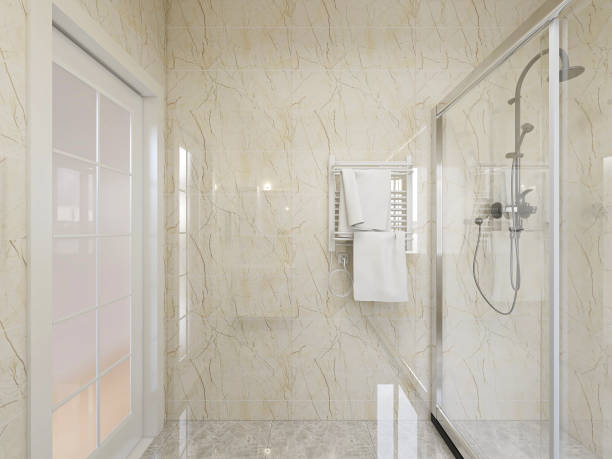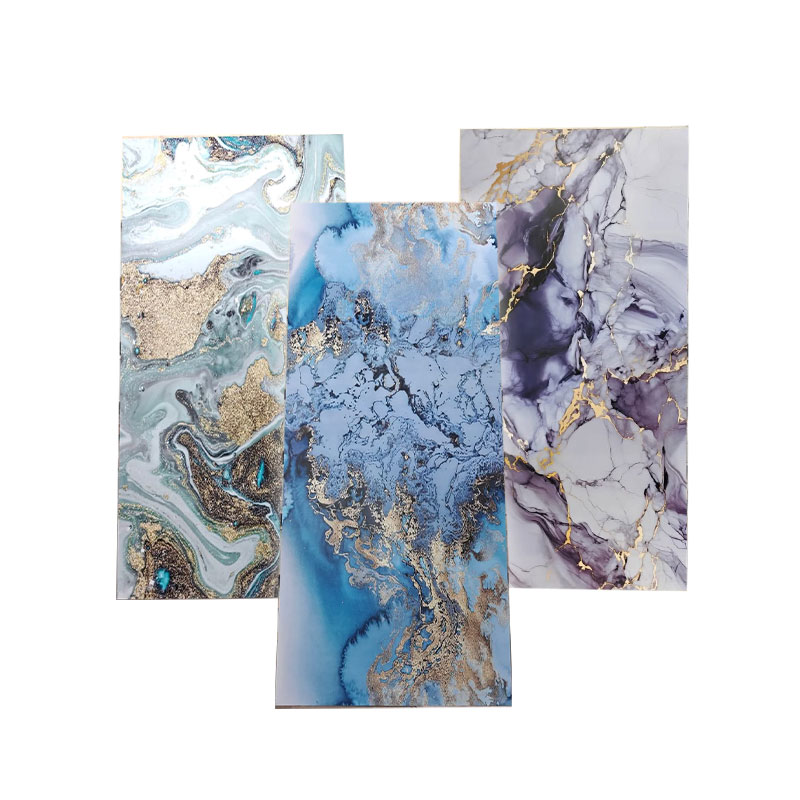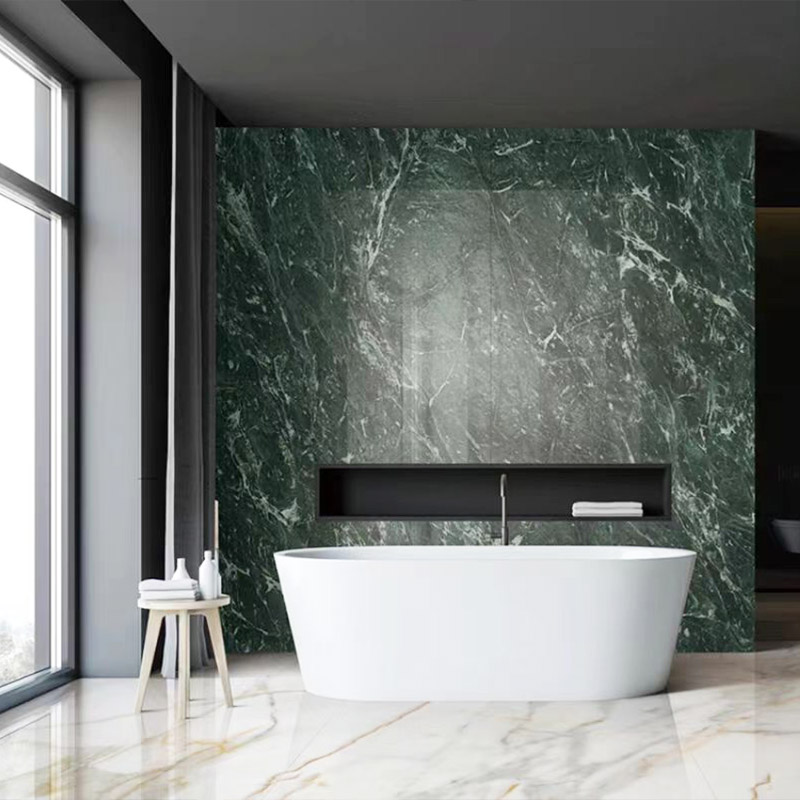What Type of Shower Wall Panels Are Best In 2025?
The shower area is the core functional zone of a home bathroom. As the “facade” and “protective layer” of this space, shower wall panels must not only resist moisture erosion and mold growth but also balance aesthetics with easy installation.
Faced with the wide variety of shower wall panels on the market, many people feel confused about “which one is best” when purchasing. Starting from the core functional requirements of shower wall panels, this article will analyze the characteristics of mainstream panel types one by one and identify advantageous categories through multi-dimensional comparisons to help you find the most suitable shower wall panels for your bathroom.

Table of Contents
What Functions Should Shower Wall Panels Have?
Shower wall panels are exposed to high temperatures, humidity and water for prolonged periods. Their performance has a direct impact on durability and the user’s experience. The best ones should meet five core functional requirements.
1. Waterproof and Moisture-Resistant
This is the basic function. Shower moisture can seep into panels; poor waterproofing causes deformation, bulging, wall mold, water leakage, and even affects downstairs neighbors. Quality panels should be “non-absorbent on the surface and impermeable inside,” maintaining structural stability after long-term water contact.
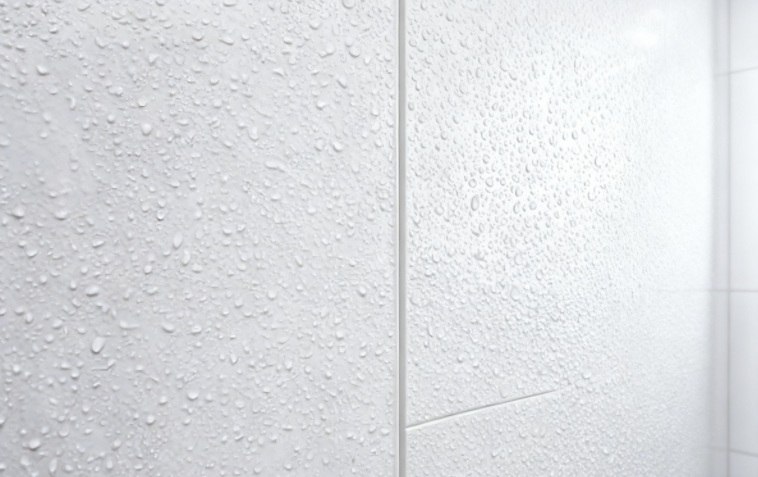
2. Mold and Bacteria Resistant
Mold and bacteria thrive in humid environments, particularly around panel gaps. Black mold can grow on water-absorbent materials or those that are mold-prone. This will ruin the appearance of your panels and release harmful spores which harm respiratory health. Mold can be prevented by using mold-resistant panels (inorganic or not) and anti-mold surface treatment.
3. Wear and Stain Resistant
Shampoo, body wash, and toothpaste often drip on panels. Poor stain resistance leaves hard-to-clean marks; daily wiping or clothing friction may scratch surfaces. Quality panels allow easy stain removal with a damp cloth and stay scratch-free after long use.
4. Easy Installation and Maintenance
Traditional tile installation needs cement mortar, taking time, with high difficulty and risks of hollowing or falling off. Modern quality panels use snap-on or splicing methods, requiring no complex processes and taking 1-2 days to install. They also need simple maintenance—no frequent waxing or gap filling, just daily cleaning with a damp cloth to cut costs.
5. Aesthetic and Adaptive
As key bathroom decor elements, panels’ color, texture, and style must match the overall space. Quality ones offer diverse options (marble-like, wood-like, solid colors) to fit styles like modern minimalist, Nordic, or light luxury. They also enable seamless or narrow-gap splicing to boost the shower area’s aesthetics.
What Types of Shower Wall Panels are Available on the Market?
Shower panels are split into five major groups – SPC, PVC, acrylic, fiberglass, and tile. The main differences lie in their materials and overall performance.
SPC Shower Wall Panels
SPC Shower Panels are made from polyvinyl chloride resin and natural stone powder via high temperature extrusion. These panels also have an outer layer of wear resistant and a decorative layer. They are highly durable due to the stone powder of premium quality and the wear resistant material of high durable. They are also waterproof and moisture resistant which means no deformation or mold will form. Their ultra high durable formulation will be friendly to elderly and children. They will be easy to install without the use of cement mortar and will not leave gaps. These panels will blend with various bathroom designs due to their rich textures which include faux marble.
PVC Shower Wall Panels
PVC Shower Wall Panels constructed through extrusion processes make use of PVC resin combined with stabilizers and plasticizers. Their chief advantage is cost: low raw material prices and well-established production processes maintain them at 60% to 70% of the price of SPC panels, catering to economically restricted families. Their lightness promotes self-installation and helps to reduce labor costs. The non-absorbing, smooth surface permits waterproofing so that only daily cleaning with a damp cloth is needed. This feature is especially beneficial for transitional or rental houses.
Acrylic Shower Wall Panels
With acrylic resin as the base and a high-gloss decorative layer (some add fiberglass), these panels focus on aesthetics. They have excellent visual effects, with high gloss, bright uniform colors, and effects like solid color or imitation jade, fitting light luxury or modern minimalist bathrooms. Their smooth, delicate surface offers better touch than PVC or SPC panels, and slight scratches can be polished with a special paste for extended service life.
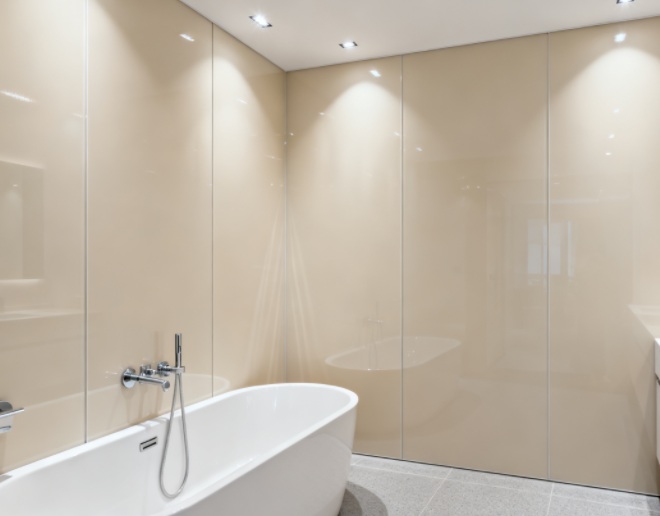
Fiberglass Shower Wall Panels
Fiberglass Shower Wall Panels are made of fiberglass cloth that has been impregnated and pressed with resin. They have a waterproof surface coating and are very tough. The fiberglass network structure offers strong impact resistance and prevents breakage, even when struck. This is ideal for families with children or pets. The panels are also more resistant to high and low temperatures than PVC and acrylic, and resist brittleness or aging in high temperature and high humidity shower environments.
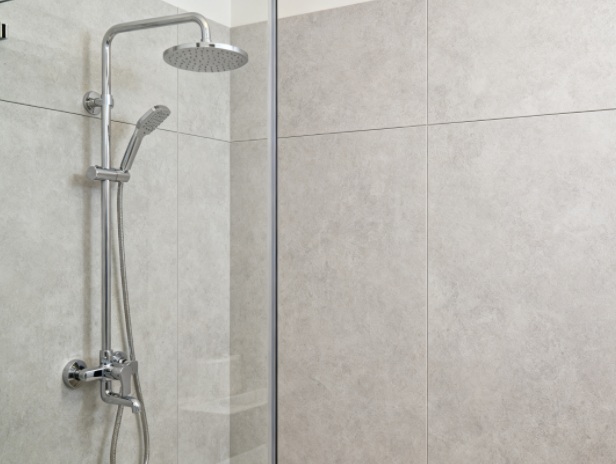
Tile Shower Wall Panels
Bathroom decoration has long used traditional ceramic panels fired at a high temperature, including glazed and full body tiles. Their durability is 10-20 years due to their high hardness and wear resistance. The dense surface glaze is resistant to stains and can be cleaned with water or other ordinary cleaners. They are available in a wide range of colors and specifications, from white glazed tiles to tiles that mimic wood.

Comparison of 5 Types of Shower Wall Panels
The characteristics of one wall panel are not enough to decide “which is best”. The following is a horizontal comparison of the 5 types of shower wall panels across 6 core dimensions – waterproofness, durability, environmental friendliness, installation difficulty, maintenance cost, and cost-effectiveness–to help you visually see the advantages and shortcomings of each type.
| Comparative Dimension | SPC Shower Panels | PVC Shower Panels | Acrylic Shower Wall Panels | Fiberglass Shower Panels | Tile Shower Wall Panels |
| Waterproof | ★★★★★ (100% waterproof) | ★★★★☆ (surface waterproof, but seams need to be sealed) | ★★★★☆(Good waterproofness but prone to deformation when heated) | ★★★★★(Waterproof base material with durable coating) | ★★★★☆ (Waterproof tiles and grout that is prone to seepage) |
| Durability | ★★★★★ (High hardness, wear-resistant) | ★★★☆☆(Low hardness and easy to scratch) | ★★★★☆(Easy to repair but poor resistance to high temperatures) | ★★★★☆(Strong toughness, impact-resistant) | ★★★★★(High hardness and long service life) |
| Environmental friendliness | ★★★★★ (Formaldehyde-free, odorless) | ★★★☆☆ (Low-cost products are made from recycled materials) | ★★★★☆(Products that comply with the regulations and emit minor emissions are safe.) | ★★★★☆(Attention to the coating (resin is odorless; resin is not a flammable material).) | ★★★★★ (Environmentally safe (no formaldehyde)) |
| Installation Difficulty | ★★★★☆ (Snap-on is completed in just 1-2 days) | ★★★★★(Lightweight, DIY installable) | ★★★☆☆(To prevent warping, seal the product with a professional sealer.) | ★★★☆☆(This requires complex cutting and fixing.) | ★★☆☆☆ (Cement mortar pave, 3-5 days). |
| Cost-Effectiveness | ★★★★☆ (Medium price, long-term durability) | ★★★★★(Low-cost, cost-effective) | ★★★☆☆(High price but preferred for appearance) | ★★☆☆☆((High price, suitable for niche needs) | ★★★☆☆(High installation and maintenance costs) |
From the comparison results, we can see:
- If you pursue “balanced overall performance”, SPC shower wall panels score full marks in waterproofness, durability, and environmental friendliness, with convenient installation and maintenance, making them suitable for most families.
- If you have a limited budget, PVC shower wall panels offer the highest cost-effectiveness, suitable for rental houses or transition houses.
- If you value “appearance and texture”, acrylic shower wall panels are the first choice, but you need to accept their shortcoming of poor high-temperature resistance.
- If you pursue “ultra-long service life”, tile wall panels are the most durable, but they have high installation and maintenance costs, making them suitable for new house decoration where long-term maintenance is not a concern.
- Fiberglass wall panels have few color options and high prices, so they are only suitable for scenarios with special “impact resistance” needs and not recommended for ordinary families.
Why SPC and PVC Wall Panels Stand Out?
In terms of market sales and user feedback, SPC and PVC shower wall panels have become “mainstream choices” in recent years, with a combined market share over 70% in modern bathroom renovations. Their success lies in meeting modern families’ key needs—solving traditional tiles’ installation and maintenance issues while balancing performance and price.
1. Easier Installation and Maintenance
Traditional tile panels need cement mortar, professional tilers, and long construction periods; their grout turns black and requires reapplication every 2-3 years, wasting time and money.
SPC and PVC panels fix these problems. With snap-on/splicing designs, they only need wall leveling and fixation with special glue/snaps, taking 1-2 days to install at 1/3 the labor cost of tiles. SPC panels have seamless/narrow joints (<1mm), while PVC panels use neutral glass sealant for minor gaps—no frequent grout replacement. Daily maintenance is just wiping with a damp cloth, no waxing or gap filling, cutting “hidden costs” even after 5-8 years.
2. Adapting to Different Budgets
Both provide quality performance at affordable prices.
PVC panels can be installed by DIYers at a low cost. They are waterproof, easy to clean, durable for 3-5 years (suitable for rental), and lightweight.
SPC panels are more expensive than PVC but have better performance. They are harder, more durable, formaldehyde free, waterproof, and last for 10-15 years. The “annual cost average” of SPC panels is lower than PVC, which needs to be replaced every five years.
3. Balancing Aesthetics and Practicality
Matching modern bathrooms’ demand for simplicity, they have rich, realistic patterns (marble, wood grain, solid colors). SPC’s stone-like textures mimic natural marble without seepage/cracking; its lock-and-snap joints keep surfaces seamless and clean. PVC panels, sealed with glue, look “visually seamless,” fitting modern minimalist/Nordic styles.
At 6-10mm thick (thinner than 12-15mm tiles), they avoid a cramped feel, ideal for small bathrooms to save visual space.
In Conclude
Choosing the right shower wall panel is crucial, as it relates to visual aesthetics, functionality, and performance. Whether you prioritize durability, budget, or appearance, you can always find a suitable option. If you decide to choose SPC or PVC wall panels as your shower wall panels, come to Chongqing Huigong. As a professional SPC and PVC wall panel manufacturer, Chongqing Huigong offers a variety of patterns and can customize your product.

